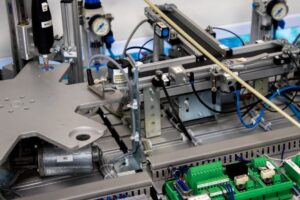Early in his journalism career, Kerry L. Tucker had a revelation: there were not enough experts reporting on law issues. Legal matters are part of daily life. Yet, there seems to be a general aversion towards them. One of the main reasons for this is that the convoluted legal language is difficult for many people to follow. Therefore, he decided to change how the law is perceived by the public. Throughout his career, he met with many people who shared their personal stories with him. Some of these hit him harder. One of the cases that stayed with him and influenced his future career development was a car accident case involving a child. From then on, he decided to zero in on car accident lawsuits.
How You Can Prevent a Car Crash Using the Latest Technology
Motor vehicles have evolved, and now most have enhanced features and the latest technology to assure road safety and avoiding car crashes. These latest technologies have been installed so that the driver can use them swiftly not only in an emergency, but also before an accident happens. Let us look at them.
6 Latest Technologies for Preventing a Car Crash
Thanks to technological advances in automobile safety, we now have the following new safety features available to help keep us safe on the road.
1. Auto Steering
Auto Steering does not mean that you get to sit back with your hands behind your head as the car drives itself. On the contrary, Auto Steering comes into motion when there is a sudden block in the car’s path. One example of this would be a driver who is out at night and hits a deer in the road. Auto Steering would then apply the breaks to ensure that the car does not veer off into the oncoming lane.
2. Automated Emergency Braking (AEB)
Automated Emergency Braking works closely with Auto Steering. It works by giving the driver a heads-up about an imminent crash and helping the driver to avoid a collision by applying the brakes. Suppose the driver is not in a position to respond immediately; the AEB works independently. There are three categories of AEB, and these are:
- Higher speed system: With long-range radar, this system scans up to 200 meters.
- Low-speed system: This comes into motion to detect vehicles in front of the car in a city street to prevent head-on collisions and other crashes.
- Pedestrian system: As the name suggests, this system detects pedestrian motion in front of the car to prevent a collision.
3. Led Headlights
In the instance where you are driving late into the night, you will need quality lighting to clear your path. This is where the LED headlights come in. Not only are they brighter than other headlights, but they are also long-lasting. Some go up to 20 years. Out of 100% emergency, the LED uses up to 80% of it, converted into lighting. This means that only 20% is wasted, making it fuel-efficient.
4. Electrical Stability Control (ESC)
When the weather is stormy or snowy, it is easy for a vehicle to veer off. The ESC is designed to prevent just that. It ensures that regardless of the weather conditions, the car does not slide out of control. It works to reduce the engine power by applying the brakes momentarily to the wheels.
5. Backup Cameras
This technology works to prevent crashes that occur when you are pulling out of the driveway. The camera comes into motion when the car is in reverse to enable the driver to have a good look at what is behind the vehicle. It is also called a rearview video system.
6. Lane Departure Warning
If the driver gets distracted and starts to drift off the lane, the lane departure warning sends warning signals to the driver. It helps the driver to maintain their lane and prevent a sideswipe accident. You will find that the technology may work independently in some cars to ensure the vehicle does not lose control.
Hi-Tech Safety: It’s Not Just for Cars
There have also been technological advances in motorcycle safety that are making the roads safer for everyone. According to one Fort Lee motorcycle accident lawyer, the majority of motorcycle crashes take place between the motorcycle and a full-size vehicle, so improving safety for motorcycles also improves the safety of the drivers of cars and trucks.
Motorcyclists are currently benefiting from the following technological safety advances:
- Adaptive headlights
- Vehicle-to-vehicle communication
- Automatic clutch and shift
- Electronic tire pressure monitors
There are also airbag suits that protect riders similar to the airbags found in vehicles. In the future, we can expect even more technological advances for automobiles and motorcycles that will lower the number of injuries and deaths.
Conclusion
Drivers need to be keen and cautious regardless of the technology that is available to keep them safe. These technologies may take control in the event of an imminent threat, but nothing can take the place of safe, sensible driving.




